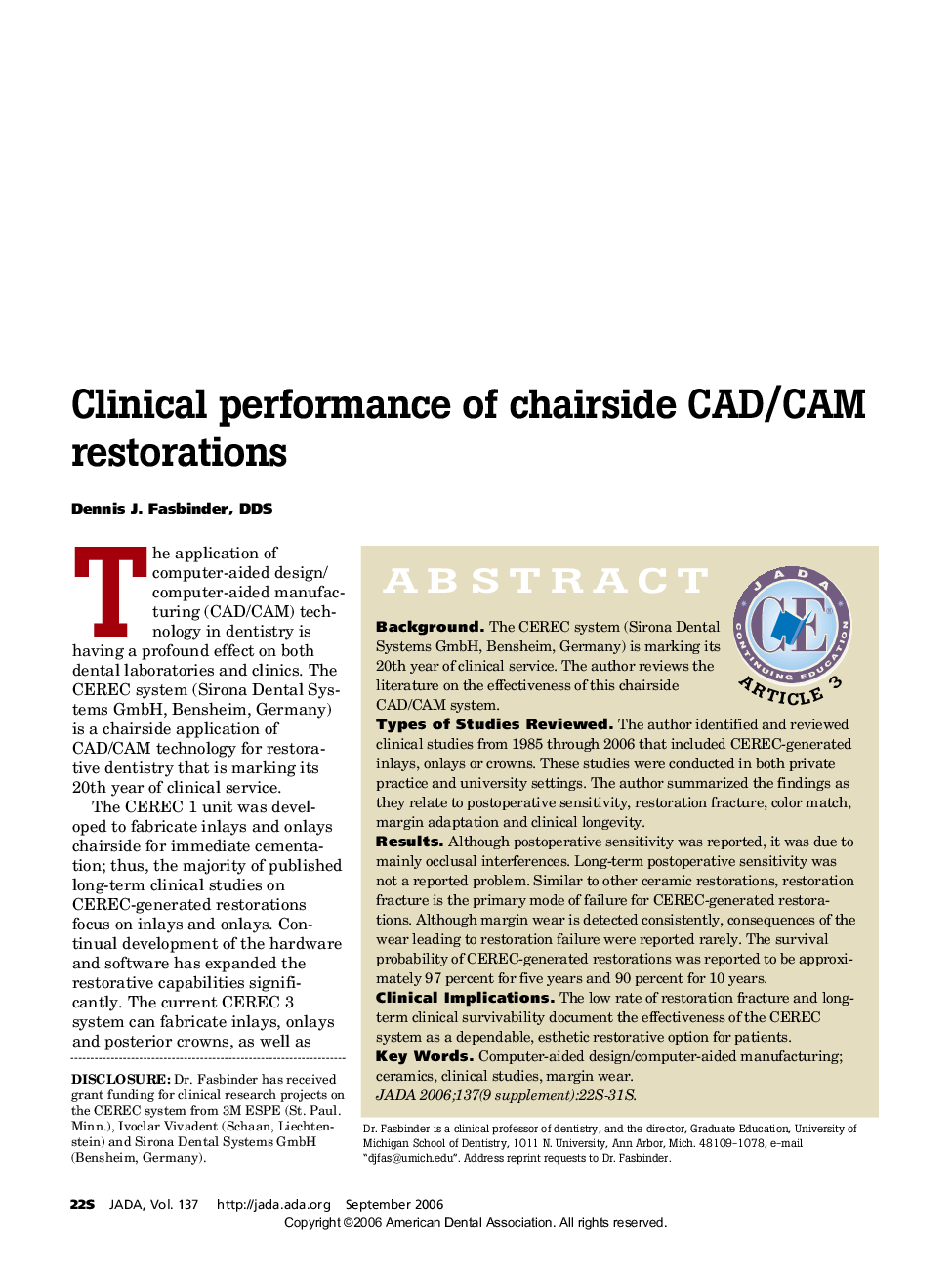| Article ID | Journal | Published Year | Pages | File Type |
|---|---|---|---|---|
| 3140347 | The Journal of the American Dental Association | 2006 | 10 Pages |
ABSTRACT BackgroundThe CEREC system (Sirona Dental Systems GmbH, Bensheim, Germany) is marking its 20th year of clinical service. The author reviews the literature on the effectiveness of this chairside CAD/CAM system.Types of Studies ReviewedThe author identified and reviewed clinical studies from 1985 through 2006 that included CEREC-generated inlays, onlays or crowns. These studies were conducted in both private practice and university settings. The author summarized the findings as they relate to postoperative sensitivity, restoration fracture, color match, margin adaptation and clinical longevity.ResultsAlthough postoperative sensitivity was reported, it was due to mainly occlusal interferences. Long-term postoperative sensitivity was not a reported problem. Similar to other ceramic restorations, restoration fracture is the primary mode of failure for CEREC-generated restorations. Although margin wear is detected consistently, consequences of the wear leading to restoration failure were reported rarely. The survival probability of CEREC-generated restorations was reported to be approximately 97 percent for five years and 90 percent for 10 years.Clinical ImplicationsThe low rate of restoration fracture and long-term clinical survivability document the effectiveness of the CEREC system as a dependable, esthetic restorative option for patients.
